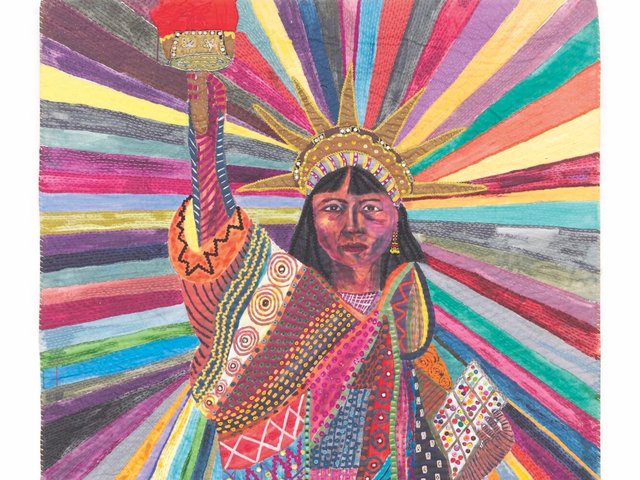The Noguchi Museum has opened a touring retrospective centred on the life and work of Toshiko Takaezu (1922-2011), featuring around 200 works that track the formal and conceptual progression of her practice over her six-decade career as a ceramicist, weaver and painter. In her work, Takaezu was “reaching for something transcendent and profound”, says the Noguchi Museum curator Kate Wiener, who co-organised the show with the art historian Glenn Adamson, composer and sound artist Leilehua Lanzilotti and former Noguchi Museum senior curator Dakin Hart.
Takaezu was born in Pepeekeo, Hawaii, to Japanese immigrant parents, and spent most of her life in Honolulu. Best known as a ceramicist, Takaezu was first exposed to the medium in the late 1940s, when she worked at the Hawaiian Potters Guild, a commercial studio in Honolulu. She first produced functional objects like plates and bowls, or what she called “landscapes for the table”, continuing to create these in tandem with her more sculptural ceramics. Her last retrospective opened in 1995 at the National Museum of Modern Art, Kyoto, and travelled across Japan and the US until 1997.
“Takaezu was recognised and celebrated in her lifetime, but it is only now that the full extent and importance of her work and her compelling commitment to artistic hybridity is being seen,” Wiener says. “Like [Isamu] Noguchi, she consistently sidestepped art-world conventions and upended stereotypes to create a practice that blurred boundaries between media and challenged the working vocabularies of art history.”
Takaezu and Noguchi—the sculptor and founder of the Noguchi Museum—were longtime friends and supporters of each other’s work. In 1988, Noguchi agreed to write an essay for the catalogue of Takaezu’s 1990 show at the Montclair Art Museum but died before penning the text. Noguchi also owned a number of Takaezu’s works, three of which are shown in the exhibition. Wiener adds: “Using Noguchi’s Museum—this incredible platform he constructed—to show Takaezu’s work feels like a fitting way to honour their mutual admiration.”
Multi-media approach
Takaezu focused on so-called “closed-form” ceramic sculptures, a term that is descriptive but also a “consciously charged phrase”, according to Adamson. “The use of the term ‘form’ suggests an alignment to Modernism and the domain of abstraction,” he says. “The closure results in a withholding of the interior of the object, making it a space only accessible to the imagination, and also an exterior that is totally continuous, which Takaezu then embraced as a painterly field.”
The retrospective also examines Takaezu’s installation techniques, including examples of the weavings and paintings she would often show alongside her ceramics to create multi-media environments. Her ceramics are installed nestled within the plush ground of one of her high-pile weavings, for instance, and positioned in direct dialogue with her acrylic paintings.
Some of Takaezu’s ceramics feature unseen sonic elements, including clay pieces that rattle inside the works. Realising that the rattle made a beautiful sound, the artist began “adding a unique element of sound to her work—whether or not that sound was always being activated—allowing for a way to approach the interior of the work through tactile exploration and hearing how the clay rattle moved along the edges of the closed form”, Lanzilotti says.
Lanzilotti—a finalist for the 2022 Pulitzer Prize in music—has created a programme to complement the exhibition, including the immersive installation The Sky in Our Hands, Our Hands in the Sky (2023). The 46-minute soundscape was produced over the course of five years as Lanzilotti visited the Toshiko Takaezu Foundation, private collections and museums to record Takaezu’s work. Using footage of Hawaii as a backdrop, the work allows visitors to feel as though they were “inside one of Takaezu’s works, hearing the resonance”, Lanzilotti says.
The exhibition will travel to the Cranbrook Art Museum in Detroit later this year; the Museum of Fine Arts, Houston, and the Chazen Museum of Art in Madison in 2025; and the Honolulu Museum of Art in 2026.
- Toshiko Takaezu: Worlds Within, Noguchi Museum, until 28 July




